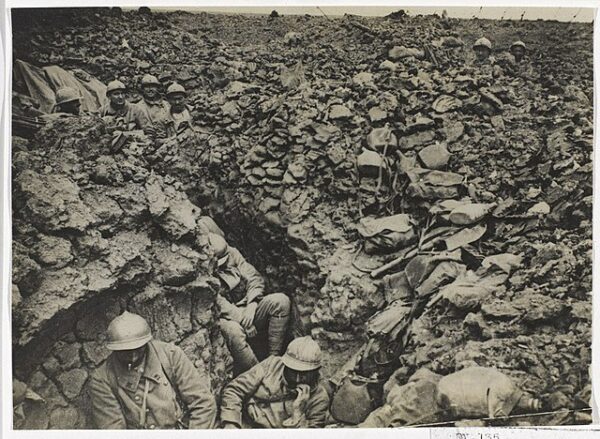On June 26, 1945, the world came together to create the United Nations, marking a pivotal moment in international diplomacy. In the auditorium of the Herbst Theater in San Francisco, delegates from 50 nations gathered together in hopes of creating an organization that would promote peace, security, and cooperation among nations.
Despite the failure of the League of Nations in arbitrating the conflicts that led up to World War II, the Allies as early as 1941 proposed establishing a new international body to maintain peace in the postwar world. The idea of the United Nations began to be articulated in August 1941, when U.S. President Franklin D. Roosevelt and British Prime Minister Winston Churchill signed the Atlantic Charter, which proposed a set of principles for international collaboration in maintaining peace and security. Later that year, Roosevelt coined “United Nations” to describe the nations allied against the Axis powers–Germany, Italy and Japan. The term was first officially used on January 1, 1942, when representatives of 26 Allied nations met in Washington, D.C., and signed the Declaration by the United Nations, which endorsed the Atlantic Charter and presented the united war aims of the Allies,” notes The History Channel.
In October 1943, the major Allied powers—Great Britain, the United States, the USSR, and China—met in Moscow and issued the Moscow Declaration, which officially stated the need for an international organization to replace the League of Nations. That goal was reaffirmed at the Allied conference in Tehran in December 1943, and in August 1944 Great Britain, the United States, the USSR, and China met at the Dumbarton Oaks estate in Washington, D.C., to lay the groundwork for the United Nations. Over seven weeks, the delegates sketched out the form of the world body but often disagreed over issues of membership and voting. Compromise was reached by the “Big Three”—the United States, Britain, and the USSR—at the Yalta Conference in February 1945, and all countries that had adhered to the 1942 Declaration by the United Nations were invited to the United Nations founding conference.
On April 25, 1945, the United Nations Conference on International Organization convened in San Francisco with 50 nations represented. Three months later, during which time Germany had surrendered, the final Charter of the United Nations was unanimously adopted by the delegates. On June 26, it was signed. The Charter, which consisted of a preamble and 19 chapters divided into 111 articles, called for the U.N. to maintain international peace and security, promote social progress and better standards of life, strengthen international law, and promote the expansion of human rights. The principal organs of the U.N., as specified in the Charter, were the Secretariat, the General Assembly, the Security Council, the Economic and Social Council, the International Court of Justice, and the Trusteeship Council.
As outlined in the charter, The National Archives explains, “the two main bodies of the United Nations are the General Assembly, composed of all member nations, and the Security Council. Today, nearly 200 nations are members of the United Nations General Assembly. The UN Security Council consists of the five victors from World War II (known as “The Big Five”) as permanent members—China, France, the United Kingdom, the USSR (now Russia), and the United States—and 10 other countries, elected by the General Assembly, that serve 2-year terms. The Security Council is the principal UN organ responsible for ensuring peace, and its decisions are binding on all member states. The five permanent members were given individual veto power over issues brought before the Council.”
The United States Senate ratified the United Nations Charter by a vote of 89-2 that in July of that that year. Its approval marked a major sea change for American involvement in world affairs for the next seven decades.
The United Nations (UN) Charter went into effect on October 24, 1945. This date has come to be recognized as United Nations Day and commemorates the entry into force of the Charter.






